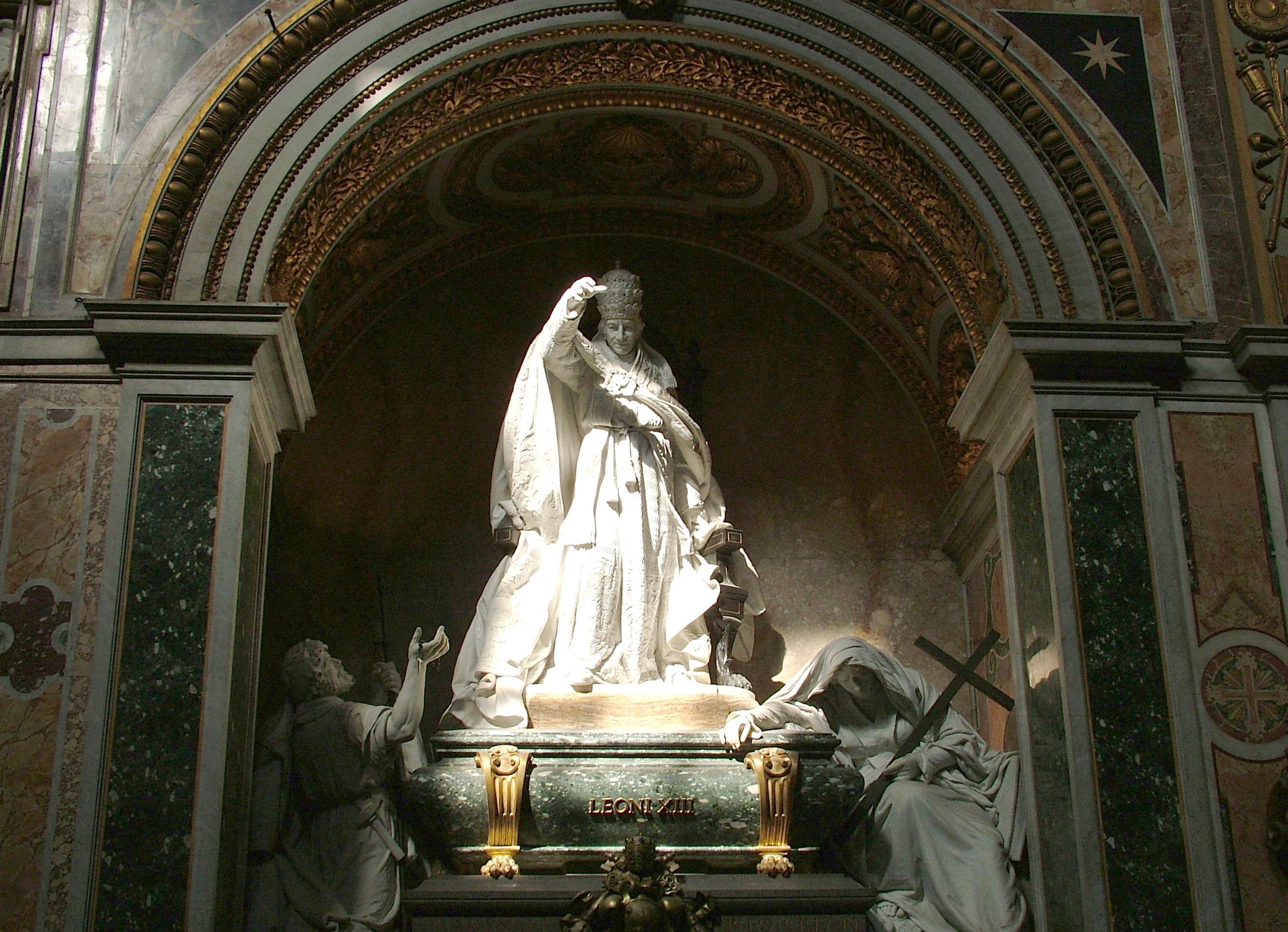Two hundred and ten years ago, on March 2, 1810, Vincenzo Gioacchino Pecci, who would remain in the memory of the Church as the great pope of the “social question,” was born in Carpineto Romano, south of Rome — Leo XIII (1810–1903).
The wisdom and foresight of this supreme pontiff was well underlined by Benedict XVI: “Every pastor is called to pass on to the People of God ‘wisdom,’ not abstract truths; in other words, a message that combines faith and life, truth, and practical reality. Pope Leo XIII, with the help of the Holy Spirit, was able to do this in one of the most difficult periods of history for the Church by staying faithful to tradition and, at the same time, measuring up to the great open questions” (Pastoral Visit to Carpineto Romano, September 5, 2010).
Leo XIII is not only the great author of the Rerum Novarum, the well known encyclical that underlines Christian teaching in the social field. And he is not only that excellent pastor — he who, as apostolic nuncio, as bishop of Perugia, and as supreme pontiff, has incarnated the Church as teacher with a transparent doctrine and solid Marian piety — that perhaps few know. Leo XIII was also an “amateur [i.e., a lover] of music,” the chronicles narrate.
This attention to music is manifested not only in the satisfaction he felt by attending the performances of classical music in his honor, but also in having brought “to ripening the ecclesiastical legislation on sacred music,” always according to the chronicles of the time. We could not let this anniversary pass without thinking about how much, in the twenty-five years in which he governed the Church (between February 20, 1878 and July 20, 1903), he did in favor of sacred music.
First of all, it must be said that the second half of the 19th century was a time of great efforts to reform church music: the German-speaking countries, France, Spain, England, the United States, and Italy wanted to restore a “true, genuine church music.” In Regensburg, Benedict XVI recalled that “an important contribution to the renewal of sacred music in the nineteenth century was made by a canon of this collegiate church, Carl Joseph Proske (1794–1861). Gregorian chant and classic choral polyphony were integrated into the liturgy. The attention given to liturgical sacred music in the ‘Old Chapel’ was so significant that it reached far beyond the confines of the region, making Regensburg a center for the reform of sacred music, and its influence has continued to the present time” (Greeting during the Blessing of the new organ of Regensburg’s Alte Kapelle, September 13, 2006). Franz Xavier Witt (1834–1888), priest and Proske’s pupil, as well as other church musicians, brought the “tradition of Regensburg” to great bloom: in 1868, Witt founded the General Association of St. Cecilia for the German-speaking countries, approved and confirmed by pontifical right in 1870 by Pius IX. In 1880, thanks to Milanese priest Guerrino Amelli (1848–1933), the General Italian Association of Santa Cecilia was born in Italy (cfr. F. Baggiani, Le radici ceciliane di san Pio X e la riforma della musica sacra).
In a time so ripe for certain practical reforms, Leo XIII on September 24, 1884 issued, by means of the Sacred Congregation of Rites, Regulations for sacred music, in Latin and in Italian, “in order to bring an effective remedy to serious abuses, which got into sacred music in various Italy’s Churches” (cfr. Acta Sanctæ Sedis, XVII, 1884, p. 340). In 23 articles, the norms already given by the Church in this matter are condensed, and the work started by the Cecilian movement for the reform of Catholic Church music: more intelligible texts and less theatrical music.
On July 6, 1894 the Normæ pro musica sacra were published: a set of new regulations that, “wider and more forgiving,” confirmed the previous decisions regarding Gregorian chant and polyphony and urged, without any imposition, to use the edition of Regensburg (cfr. ASS, XXVII, 1894–95, p. 42).
Also the following documents on the subject, issued during his pontificate, testify to how much the cause of musical restoration mattered to the pope of Carpineto Romano.
The brief Sacrorum concentuum of Leo XIII, dated November 15, 1878, intended to precede the edition of the Antiphonary and Psalter printed by the knight Friedrich Pustet of Regensburg (cfr. ASS, XI, 1916, p. 289).
The decree Romanorum Pontificum sollicitudo of the Sacred Congregation of Rites, dated April 26, 1883, which reconfirmed the authenticity of the editions of Regensburg and encourages — perhaps too little — the research of “musical archeology” of the Solesmes monks (cfr. ASS, XXII, 1889-90, p. 177).
The brief Redditum fuit nobis, dated March 8, 1884, in which the Holy Father expresses to Dom Joseph Pothier, Benedictine of Solesmes and a great expert in musical paleography, his appreciation for the printing, in 1883, of the Liber Gradualis a S. Gregorio Magno olim ordinatus, for use by Benedictine monks (cfr. ASS, XVI, 1883, pp. 465–466).
The decree Quod Sanctus Augustinus of the Sacred Congregation of Rites, dated July 7, 1894, about the uniformity to be preserved in choral singing (cfr. ASS, XXVII, 1894-95, pp. 50-53).
The pope didn’t escape the vast restoration movement, started in 1833 in the Benedictine Abbey of Solesmes in France, thanks to the illustrious names of Dom Prosper Guéranger and Dom Joseph Pothier — to mention the main elaborators of these studies — that came to the new edition of the corpus of Gregorian melodies, which the Church officially approved and adopted in 1904.
He was a philosopher, a diplomat, a politician pope, of course. But Leo XIII should also be remembered as a lover of good music and, especially, as a restorer of liturgical musical art.


